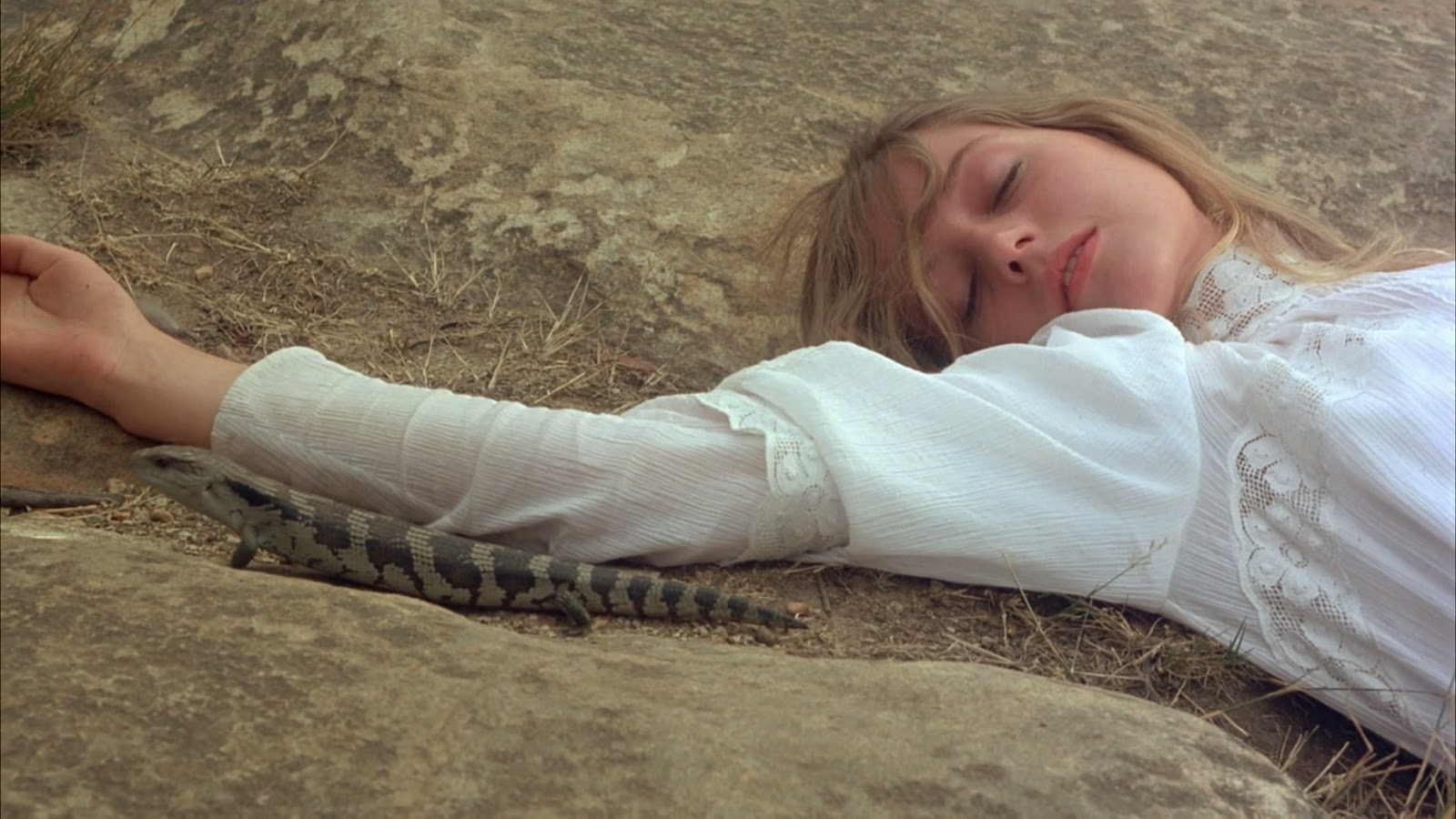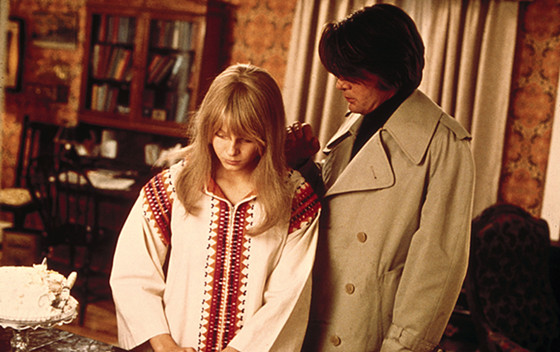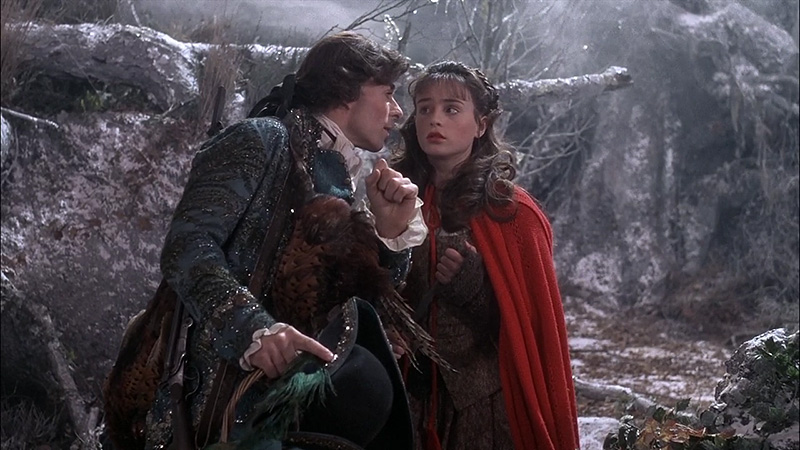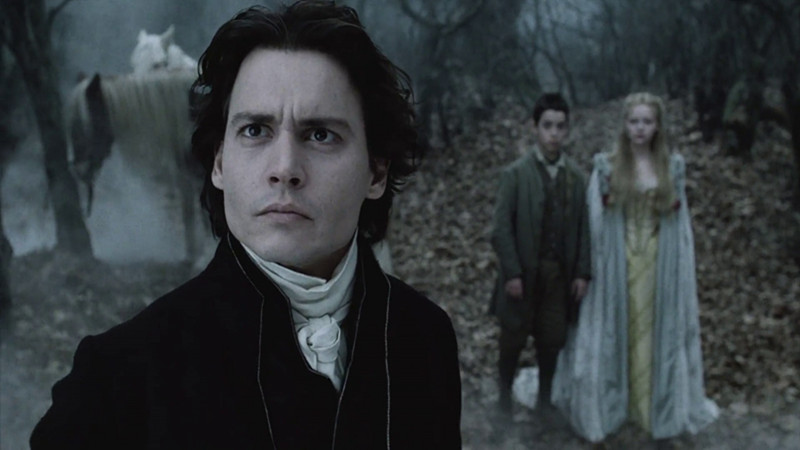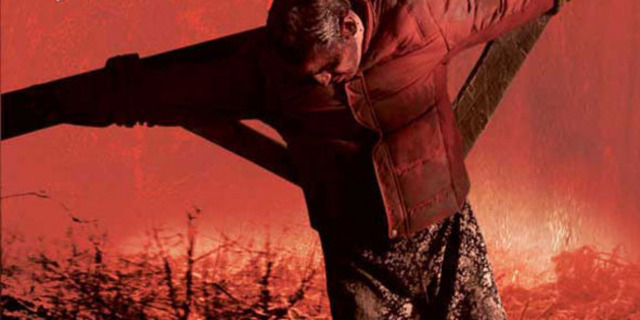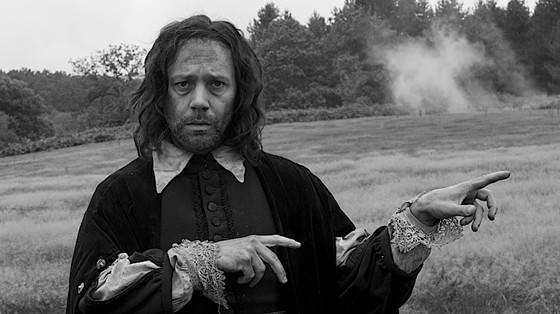15. Picnic At Hanging Rock (Australia – 1975)
Peter Weir’s seminal Australian cult classic can be seen as an example of Australian Folk Horror as it deals with fear of the unknown landscape from a coloniser’s point of view. The terrain of the Australian outback is portrayed as eerie and holds a primal sense of mystery and terror for the new people that have colonised it. The young girls of Appleyard boarding College are taken out for a picnic to an area known as Hanging Rock on a hot, sunny day. Four of the girls decide to go exploring by themselves up into the rock, however only one of the girls is ever found again, the other three having completely vanished.
There have been numerous theories of what the fate of the girls was, the most popular being that they were taken by some unknown persons, perhaps native Australians, perhaps Aliens, but the beauty of the film is that there are no concrete answers given to us, we are merely left with the aftermath of the ordeal and how it affects the college and the countryside. There is no gore, no serial killer and none of the usual motifs of a film about missing girls. There doesn’t need to be, the shots of the ancient, intimidating ‘hanging rock’, combined with an overpowering and unsettling score make this film a terrifying reminder that sometimes what is left to the viewers imagination is more effective than what is shown on screen.
16. The Little Girl Who Lives Down The Lane (US – 1976)
This one may seem a bit of a stretch but I think it deserves inclusion. While not entirely a horror film and not entirely a ‘folk’ film, The little Girl who Lives down the Lane plays out much like an old fashioned Fairytale or old wives tale warning children, especially young girls of the dangers of predators in any guise, while also turning this notion on its head in a way not often seen on film.
Rynn, played by a very young but frighteningly mature Jodie Foster, lives with her father in a small coastal town on Long Island. Every time the landlady comes to check on the house Rynn either tells her that her father is away or that he’s busy writing in his room which increasingly infuriates the landlady who begins to suspect that Rynn’s father may not be present in the house at all, not to mention where her mother may be. The real trouble starts when the landlady’s son, who is possibly a paedophile, takes an interest in Rynn and refuses to leave her alone.
Jodie Foster is pretty incredible as this precocious but terrifyingly resourceful youngster who will stop at nothing to see that her solitude remains undisturbed. It’s an odd choice but one that deserves more attention than it’s gotten and a good example of a folk-tale put into a modern setting.
17. The Company Of Wolves (UK/IRELAND – 1984)
Irish director Neil Jordan’s unfairly underrated fantasy horror is based on Angela Carter’s short story of the same name which she said had been inspired in part by Valerie and her Week of Wonders. The Company of Wolves holds its own in the realm of folk horror however, as at its heart it is concerned with the idea of burgeoning adolescence through the form of folk stories and old-wives tales. In Rosaleen’s dreams she lives in a small country village during some unspecified period in history. When her sister is eaten by wolves, her Granny (Angela Lansbury) takes care of her and tells her a series of grim stories about the (very real) terrors of werewolves.
Like ‘Valerie’, the film doesn’t have a linear plotline and things happen for no apparent reason or are symbolic of Rosaleen’s subconscious feelings towards moving into adulthood, just like a dream. Some of the special effects, especially in the werewolf transformation scenes, do tend to lack the modern sophistication of modern werewolf films but that doesn’t affect the film too much as, at its heart it is a fantastical exploration of the horrors of the adult world from the perspective of a child.
18. Sleepy Hollow (US – 1999)
Tim Burton’s knowing homage to the Hammer Horror films of the 1950s and 60s is filled with folk horror elements, a rural community plagued by supernatural terrors, grisly murders, gothic landscapes, scarecrows, witches, Sleepy Hollow manages to fit in all of these folk horror criteria and more. Ichabod Crane (Johnny Depp) travels to the farming community of Sleepy Hollow in Upstate New York where a headless horseman is said to be on the rampage, cutting off people’s heads and taking them back to hell with him. Ichabod is initially sceptical about anything that cannot be proven by science, but soon finds himself faced with something even he can’t explain.
A highly enjoyable supernatural murder mystery that, like the Hammer Horror’s before it, mixes ghoulish humour with dramatic atmosphere while adding just enough blood and gore to be taken seriously in its own right by modern audiences.
19. Calvaire/ The Ordeal (Belgium – 2004)
The less you know about Calvaire, or the Ordeal, before watching, the better. By this point folk horror has left behind the quaint, old-fashioned world of folktales and gone straight to the dark side. Marc, an amateur performer, has a break-down in the middle of the mist-ridden Belgian countryside. He goes to a small, local hotel where the owner promises to fix Marc’s car and that he can stay the night. So far so typical of the horror genre, obviously the owner of the hotel turns out to be insane and so do all the other locals, but Calvaire is even stranger and more disturbing than it initially sets itself out to be.
The title says it all, the ordeal that Marc is put through by the people of the town and the hotel owner (who may or may not believe Marc is his dead wife) has been seen by some to be almost metaphorical of Christ’s ordeal before being crucified and the film certainly doesn’t shy away from Biblical references. Calvaire makes a disturbing addition to the folk horror canon.
20. A Field In England (UK – 2013)
The latest addition to the Folk Horror canon, how to describe A Field in England? Witchfinder General meets Alejandro Jodorowsky maybe? A 17th Century psychedelic trip filmed in black and white? One of the most interesting releases of 2013, the film is difficult to categorize but it is certainly a folk horror if nothing else. Sometime during the English Civil War a band of men find themselves in a field, having escaped the nearby battle. Apparently there is treasure buried somewhere in the field and an alchemist-figure manages to force the other men into digging for this treasure by feeding them magic mushrooms, among other things.
The film is a complete head-trip, full of unnerving sounds and visceral, violent imagery, and yet it’s difficult to tear your eyes away from what appears on screen. One particular ‘trip’ scene is totally, inescapably intense and should probably be avoided by anyone prone to epileptic fits. I’m not quite sure what A Field in England is about, it’s possibly about comradery, it’s possibly an underdog story, it’s possibly a morality tale or it’s possibly just about drugs. Whatever it’s about it remains one of the most intriguing films of the last decade.
Author Bio: John Spearman is a film fan who is currently studying an English and Media degree in college in Ireland. He also enjoys reading, writing and discovering any sort of cultural curiosity he can find. Follow him on the old twitter machine: @SpearmonJohn.
